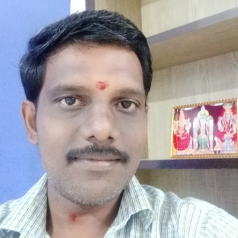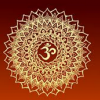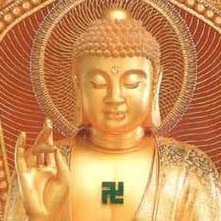Search the Community
Showing results for tags 'Sufi'.
Found 6 results
-
I recently came across the info that Sufis have their own form of journeying, to the realm of "Alam al-Mithal". Henry Corbin, an academic, has written books and articles about this form of journeying. What is a good practice guide for this type of journeying?, for someone who is not new to journeying in general but is not familiar with this Sufi journeying practice (and has no access to a Sufi teacher either) ?
-
Assalaamu aleikum wa rahmatullahi wa barakatu (May the Peace, Blessings and Mercy of Almighty God be upon you) In this post I will go over and compare the muslim ritual prayer with yoga, qigong and meditation. I will explain some of the "hidden gems" I myself have discovered with this practice. The prayer has two parts: 1) Ritual Purification (wudhu) 2) The actual prayer itself. 1) Ritual Purification (wudhu) You wash your hands, mouth, nose, face, arms, head, ears and feet. You say mantras when starting, and you say a prayer when finishing. This hold some similarities to practices in yoga and qigong as well. Yoga: 1) washing your nose is similar to the neti of the shatkarmas (six cleansing actions) 2) how you say mantras on different parts of your body is similar to kavach and nyasas (where you install protective energies in your field) 3) the idea of purification before practice is completely the same for hindu rituals and meditation Qigong: 1) Using your body while employing mantras is also done in qigong, 2) Purification is also very important in qigong, 3) Massaging your ears is a mainstay of daoist longevity practices, this is also done daily for the muslim prayer 2) The Prayer Itself (as-salah / namaz) The prayer is completely similar to yoga and qigong in the sense that you employ your body, breath (mantras) and mind together. During the prayer you switch between different positions: 1) Standing (takbir & qiyam) 2) Bent over (ruku) 3) Prostrating (sujood) 4) Kneeling (jalsah) There is stretching as well as strengthening going on when going between the movements (just like yoga & qigong exercises). There are mantras uttered at different points during the prayer (just like yoga & qigong exercises). That's how the physical body as well as the breath is employed (the postures and mantras mentioned above). However, what do to with the mind? In yoga you visualise the deities (images, idols or yantras) and/or masters during your meditation to connect with their energy. In qigong you visualise stars, planets, things from nature, animals, masters, colors, the organs, talismans etc to connect with their energy. Here are my own personal top 4 visualisations for the muslim prayer: 1) Visualise you're in Mekka and praying before the Ka'aba All muslims across planet Earth pray facing the Ka'aba each day. It's already a special energy point of planet earth's meridians. Just like human beings have meridians with energy points along them, so too does the planet have special energy lines with special points along them. The well of Zamzam is only 20m east of the Ka'aba, springing from an underground source. The whole area is an energy point, that's why they placed the Ka'aba there. When all muslims pray towards this point, this point stores their energy. It's already a high energy point to begin with. When everyone prays towards it, the shared energy container is redistributed among the faithful. So, by visualising the Ka'aba, you're connecting to a bigger, powerful storage point of energy, which will over time increase your own energy. The word "Ka'aba" is actually in the feminine form in arabic. Feminine simply means receptive, it receives energy from the universe, from the ground, as well as the faithful. I chose the above picture of the Ka'aba because there are two veiled women there as well. The veil over the women and the Ka'aba symbolizes the special protection the feminine enjoys, provided by the masculine (masculine meaning active). When we're well protected, we feel safe, we feel peaceful, and we feel intimate with whoever we're with. It's the same feeling you get in a tent in the desert, or a yurt in the grasslands. You feel intimate with whoever you're with. This energy of peace, protection and intimacy will come over you again and again, until your own soul produces the same type of energy. Then you will feel peaceful, protected and intimately connected to the Divine all throughout your daily life. 2) Visualise you're in Medina and praying close to the Masjid an-Nabawi This masjid was built by the Prophet himself, it was the site of A'isha's house, and now it holds the tomb of the Prophet himself. By visualising this green dome, you will be able to connect directly to the energy of the Prophet. You will be blessed with his tender love, compassion and humanity. Your heart will be softened and opened. You'll feel tender love for all of creation. 3) visualise you're standing before the throne of Almighty God, ranked by thousands of powerful angels Imagine God is watching you. Then perform your prayers. 4) Imagine it's your last prayer, the angel of death is behind you, it's your last opportunity to get right with God before your judgement Conclusion: As you can see, the muslim ritual prayer has many things in common with yoga, qigong and meditation. It uses the body, breath and mind to cultivate energy and connect with the Divine.
-
I stumbled upon this website actually giving out a way to open the third eye. There is a long description of the third eye in nature, animals, different religions and cultures which I think is really good. After, there are some quotes from the Qur'an which are interpreted to be about the third eye. I personally don't find these interpretations so convincing, but to each his own At the very bottom of the answer is a salaawat which when recited 101 times at night before sleep will over time open your third eye. From my personal research, it seems this salawaat is taken from the very famous Dala'il al-Khayrat (a famous collection of prayers saluting the prophet). It's in Dala'il al-Khayrat section 4 line/verse 11. However, this is my personal research. On the webpage they don't give out a source. If any of you wish to experiment with it, these are my recommendations: 1) Obtain the guidance, protection and permission/ijaazat from a shaykh/guru/teacher before reciting 2) Follow the guidance given on the webpage about the times and conditions for reciting This is the link: https://en.roohanialoom.com/2020/07/third-eye-and-holy-quranhow-to-activate-third-eye/
-
Hey, my friend posted this Chechen Zikr practice online, and, personally, it really resonates with me. Just thought I'd share. http://www.snotr.com/video/10864/Chaotically_hypnotizing_Sufi_dance_Zikr_in_Chechnya So deep, tribal, primordial. It sounds and looks amazing. My impression of Dhikr was just of individuals Whirling, etc, with chants maybe at the same time, but, this looks completely different. Any practising Sufis or Muslims here who can explain what this practice consists of? The chanting, movement, stomping, jumping, spinning, group aspect of it, all looks amazing. There must be loads of energy flying around. Isn't Vajrasattva from a Sufi or Muslim background? I'd like to know more.
-
Here is a cool documentary by Arnaud Desjardin about the Sufi of Afghanistan. Although it is not in english, it is still cool to see- [media]http://www.youtube.com/watch?v=Cox8fMHJQtU[/media ] [media]http://www.youtube.com/watch?v=7r2YE5xudhc[/media ] [media]http://www.youtube.com/watch?v=f9Hf1Wx-YMM[/media ]
- 18 replies
-
- 5
-

-
- Sufi
- Documentary
-
(and 6 more)
Tagged with:





